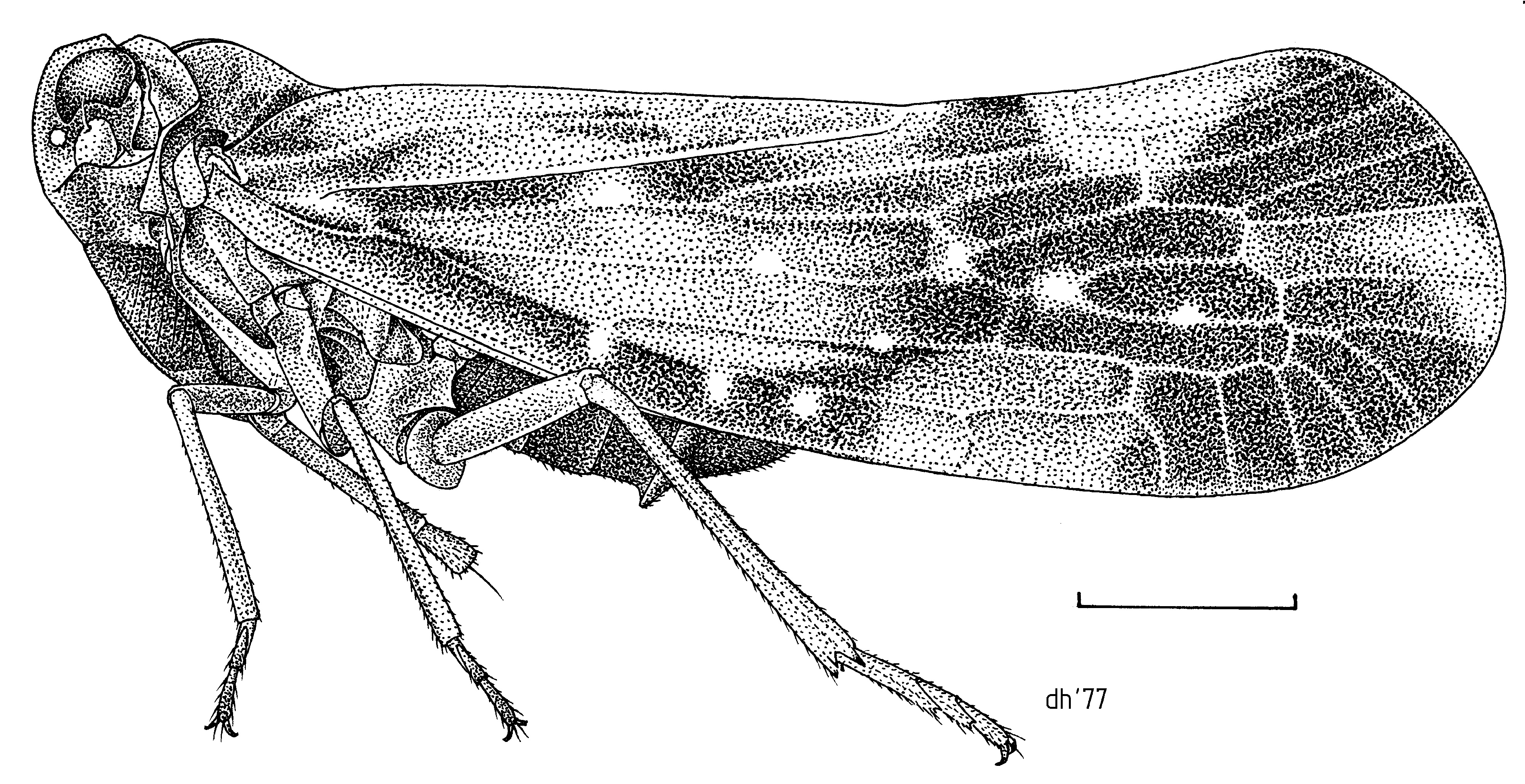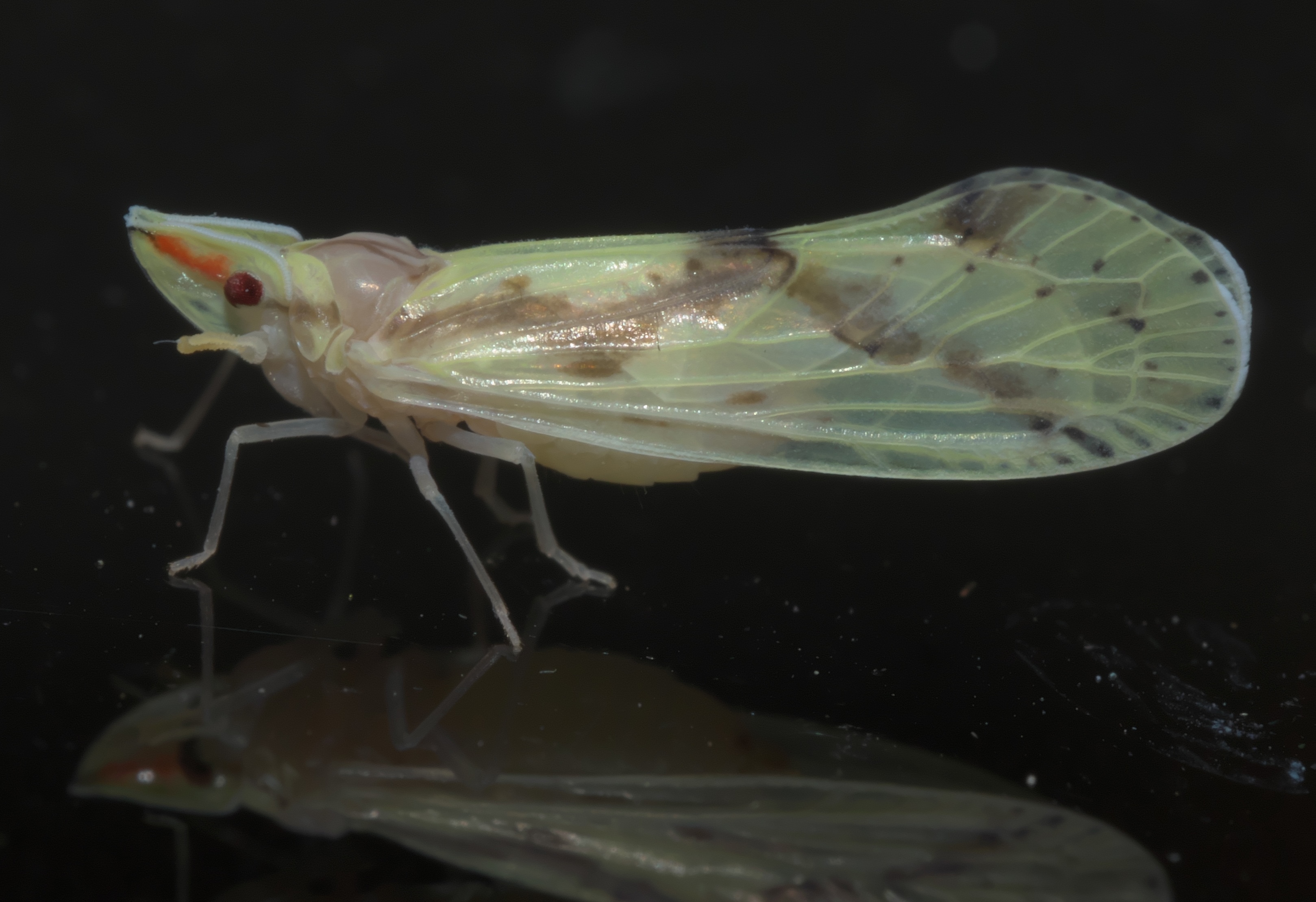|
Derbidae
Derbidae is a family of insects in the order Hemiptera, the true bugs. It is one of the largest and most diverse families of planthoppers.Rahman, M. A., et al. (2012)Taxonomic revision of the tribe Zoraidini (Hemiptera: Fulgoromorpha: Derbidae) from Korea.''Entomological Research'' 42(5), 227-42. It is widely distributed around the world, especially in the tropics, and with many species in subtropical and temperate regions.Emeljanov, A. F. and M. J. Fletcher. (2004)''Hemielissum evansi'', a new genus and species of Breddiniolini (Hemiptera: Fulgoromorpha), being the first Australian record of the tribe, with a discussion of the taxonomic position of the Breddiniolini.''Australian Journal of Entomology'' 43(1), 38-42. Adult derbids feed on plants, and nymphs feed on fungi,Planthopper Identification. [...More Info...] [...Related Items...] OR: [Wikipedia] [Google] [Baidu] |
Derbidae
Derbidae is a family of insects in the order Hemiptera, the true bugs. It is one of the largest and most diverse families of planthoppers.Rahman, M. A., et al. (2012)Taxonomic revision of the tribe Zoraidini (Hemiptera: Fulgoromorpha: Derbidae) from Korea.''Entomological Research'' 42(5), 227-42. It is widely distributed around the world, especially in the tropics, and with many species in subtropical and temperate regions.Emeljanov, A. F. and M. J. Fletcher. (2004)''Hemielissum evansi'', a new genus and species of Breddiniolini (Hemiptera: Fulgoromorpha), being the first Australian record of the tribe, with a discussion of the taxonomic position of the Breddiniolini.''Australian Journal of Entomology'' 43(1), 38-42. Adult derbids feed on plants, and nymphs feed on fungi,Planthopper Identification. [...More Info...] [...Related Items...] OR: [Wikipedia] [Google] [Baidu] |
Otiocerinae
Otiocerinae is a subfamily of derbid planthoppers in the family Derbidae. There are about 7 genera and more than 90 described species in Otiocerinae. Genera These seven genera belong to the subfamily Otiocerinae: * ''Anotia'' Kirby, 1821 * ''Apache'' Kirkaldy, 1901 * '' Otiocerus'' Kirby, 1821 * '' Patara'' Westwood, 1840 * '' Sayiana'' Ball, 1928 * '' Shellenius'' Ball, 1928 * ''Sikaiana Sikaiana (formerly called the Stewart Islands) is a small atoll NE of Malaita in Solomon Islands in the south Pacific Ocean. It is almost in length and its lagoon, known as Te Moana, is totally enclosed by the coral reef. Its total land ...'' Distant, 1907 References Further reading * * * External links * Derbidae {{Fulgoromorpha-stub ... [...More Info...] [...Related Items...] OR: [Wikipedia] [Google] [Baidu] |
Planthopper
A planthopper is any insect in the infraorder Fulgoromorpha, in the suborder Auchenorrhyncha, a group exceeding 12,500 described species worldwide. The name comes from their remarkable resemblance to leaves and other plants of their environment and that they often "hop" for quick transportation in a similar way to that of grasshoppers. However, planthoppers generally walk very slowly. Distributed worldwide, all members of this group are plant-feeders, though surprisingly few are considered pests. The infraorder contains only a single superfamily, Fulgoroidea. Fulgoroids are most reliably distinguished from the other Auchenorrhyncha by two features; the bifurcate ("Y"-shaped) anal vein in the forewing, and the thickened, three-segmented antennae, with a generally round or egg-shaped second segment (pedicel) that bears a fine filamentous arista. Overview Planthoppers are laterally flattened and hold their broad wings vertically, in a tent-like fashion, concealing the sides of t ... [...More Info...] [...Related Items...] OR: [Wikipedia] [Google] [Baidu] |
Derbinae
Derbinae is a subfamily of derbid planthoppers in the family Derbidae. Genera These 49 genera belong to the subfamily Derbinae: * '' Aethocauda'' Williams, 1976 * '' Amania'' Synave, 1973 * '' Amysidiella'' Broomfield, 1985 * '' Anchimothon'' Fennah, 1952 * ''Aquaelicium'' Distant, 1917 * '' Basileocephalus'' Kirkaldy, 1906 * '' Cedochrea'' Emeljanov, 1995 * '' Cedochrusa'' Emeljanov, 2008 * '' Cenanges'' Fennah, 1952 * ''Cenchrea'' Westwood, 1840 * '' Contigucephalus'' Caldwell, 1944 * '' Copallinges'' Szwedo, 2004 * '' Cyclometopum'' Muir, 1913 * '' Dawnaria'' Distant, 1911 * '' Dawnarioides'' Dozier, 1929 * ''Derbe'' Fabricius, 1803 * '' Dysimia'' Muir, 1924 * '' Dysimiella'' Broomfield, 1985 * ''Equirria'' Distant, 1917 * ''Fescennia'' Stål, 1886 * ''Fordicidia'' Distant, 1917 * '' Goneokara'' Muir, 1913 * '' Herpis'' Stål, 1860 * '' Ipsemysidia'' Broomfield, 1985 * '' Lamenia'' Stål, 1859 * '' Malenia'' Haupt, 1924 * '' Muirileguatia'' Metcalf, 1945 * '' Mysidaloides'' B ... [...More Info...] [...Related Items...] OR: [Wikipedia] [Google] [Baidu] |
Auchenorrhyncha Families
The Auchenorrhyncha suborder of the Hemiptera contains most of the familiar members of what was called the "Homoptera" – groups such as cicadas, leafhoppers, treehoppers, planthoppers, and spittlebugs. The aphids and scale insects are the other well-known "Homoptera", and they are in the suborder Sternorrhyncha. Distributed worldwide, all members of this group are plant-feeders, and many are vectors of viral and fungal diseases of plants. It is also common for Auchenorrhyncha species to produce either audible sounds or substrate vibrations as a form of communication. Such calls range from vibrations inaudible to humans, to the calls of many species of cicadas that can be heard for hundreds of metres, at least. In season, they produce the most characteristic and ubiquitous noise of the bush. Etymology The word auchenorrhyncha is from the Greek αὐχήν, 'neck, throat' and ῥύγχος, 'snout'. Classification Debate and uncertainty as to whether the Auchenorrhyncha ... [...More Info...] [...Related Items...] OR: [Wikipedia] [Google] [Baidu] |
Moth
Moths are a paraphyletic group of insects that includes all members of the order Lepidoptera that are not butterflies, with moths making up the vast majority of the order. There are thought to be approximately 160,000 species of moth, many of which have yet to be described. Most species of moth are nocturnal, but there are also crepuscular and diurnal species. Differences between butterflies and moths While the butterflies form a monophyletic group, the moths, comprising the rest of the Lepidoptera, do not. Many attempts have been made to group the superfamilies of the Lepidoptera into natural groups, most of which fail because one of the two groups is not monophyletic: Microlepidoptera and Macrolepidoptera, Heterocera and Rhopalocera, Jugatae and Frenatae, Monotrysia and Ditrysia.Scoble, MJ 1995. The Lepidoptera: Form, function and diversity. Oxford, UK: Oxford University Press; 404 p. Although the rules for distinguishing moths from butterflies are not well establishe ... [...More Info...] [...Related Items...] OR: [Wikipedia] [Google] [Baidu] |
Genus
Genus ( plural genera ) is a taxonomic rank used in the biological classification of extant taxon, living and fossil organisms as well as Virus classification#ICTV classification, viruses. In the hierarchy of biological classification, genus comes above species and below family (taxonomy), family. In binomial nomenclature, the genus name forms the first part of the binomial species name for each species within the genus. :E.g. ''Panthera leo'' (lion) and ''Panthera onca'' (jaguar) are two species within the genus ''Panthera''. ''Panthera'' is a genus within the family Felidae. The composition of a genus is determined by taxonomy (biology), taxonomists. The standards for genus classification are not strictly codified, so different authorities often produce different classifications for genera. There are some general practices used, however, including the idea that a newly defined genus should fulfill these three criteria to be descriptively useful: # monophyly – all descendants ... [...More Info...] [...Related Items...] OR: [Wikipedia] [Google] [Baidu] |
HEMI Derbidae Eocenchrea Maorica
Hemi may refer to: People Surname * Jack Hemi (1914–1996), New Zealand freezing worker, rugby union and league player, shearer * Ronald Hemi (1933–2000), New Zealand rugby union player Given name * Hemi Bawa, Indian painter and sculptor * Hemi Baxter, also known as James K. Baxter * Hemi Doron (born 1956), Israeli politician * Hemi Pititi Huata (1867–1954), New Zealand tribal leader and Anglican clergyman * Hemi Pomara (born 1830), Māori chief * Hemi Potatau (1904–1994), New Zealand Presbyterian minister, soldier, writer * Hemi Taylor (born 1963), Wales rugby union player * Hemi Topine Te Mamaku ( 1790–1887), Māori chief Places * Hemi Station, Japan Vehicles * Hemispherical combustion chamber ** Donovan hemi, an engine of this type ** Chrysler Hemi engine, an engine of this type ** Dodge Super 8 Hemi, a car with the Chrysler Hemi engine Other * hemi, prefix meaning "half" * Hemi group, involved in Illinois v. Hemi Group LLC See also * Semi (other) * Demi ... [...More Info...] [...Related Items...] OR: [Wikipedia] [Google] [Baidu] |
Anotia Bonnetii
Anotia ("no ear") describes a rare congenital deformity that involves the complete absence of the pinna, the outer projected portion of the ear, and narrowing or absence of the ear canal. This contrasts with microtia, in which a small part of the pinna is present. Anotia and microtia may occur unilaterally (only one ear affected) or bilaterally (both ears affected). This deformity results in conductive hearing loss, deafness. Ear development Ear development begins in about the third week of human embryonic development, beginning with the formation of the Otic Placodes, an extension of the early hind brain. By the fourth week of development the otic placodes invaginate, or sink inward forming pits which close themselves off for the outer surface ectoderm and begin forming the inner ear labyrinthe on the inside. Outer ear development begins in about the fifth week of human embryonic development. Upon the pharyngeal arches Auricle Hillocks begin to form. By the seventh week the ... [...More Info...] [...Related Items...] OR: [Wikipedia] [Google] [Baidu] |
Maximilian Spinola
Maximilian Spinola ( it, Massimiliano Spinola; July 10, 1780 – November 12, 1857) was an Italian entomology, entomologist. Background Spinola was born in Pézenas, Hérault, France. The Spinola family, family of Spinola was of very long standing and had great wealth and power in Genoa. Maximilian Spinola was a descendant of the famous Spanish General Ambrogio Spinola, marqués de los Balbases (1569–1630) and much of his wealth derived from land held in Spain and South America. He was linked to Pallavicini family, Camillo Pallavicini. Research He received many insects from his properties in Spain and South America. He also made extensive, and expensive purchases especially of large showy Tropics, tropical beetles and wasps. His entomological contributions were mainly in the orders Coleoptera, Hymenoptera and Hemiptera. Spinola made very important contributions to entomology, describing many taxa, especially in Spinola M. M., 1850.''Tavola sinottica dei generi spettanti all ... [...More Info...] [...Related Items...] OR: [Wikipedia] [Google] [Baidu] |


.jpg)




